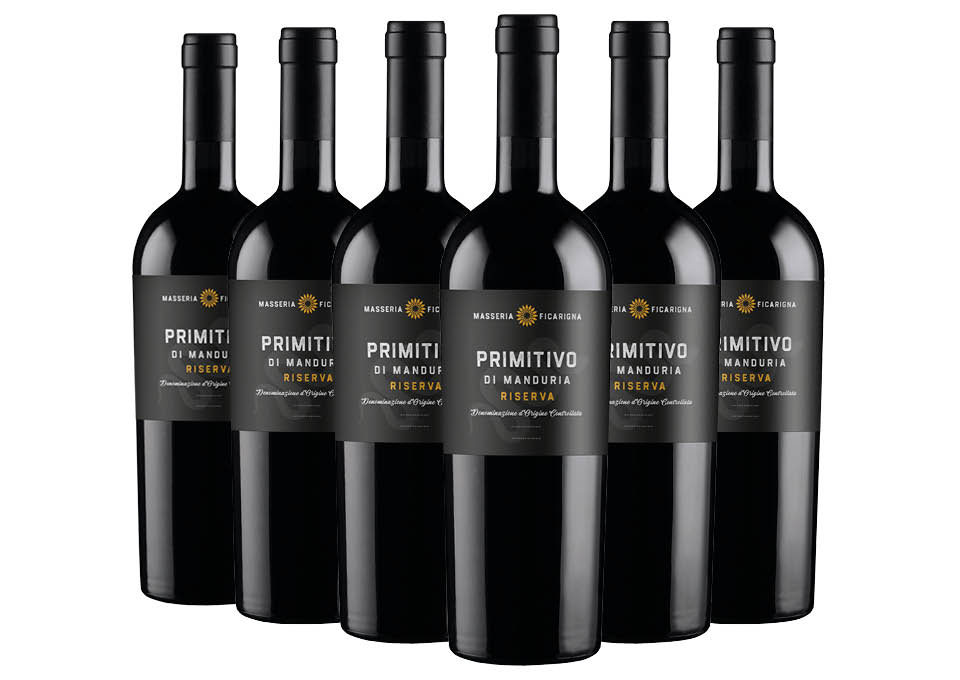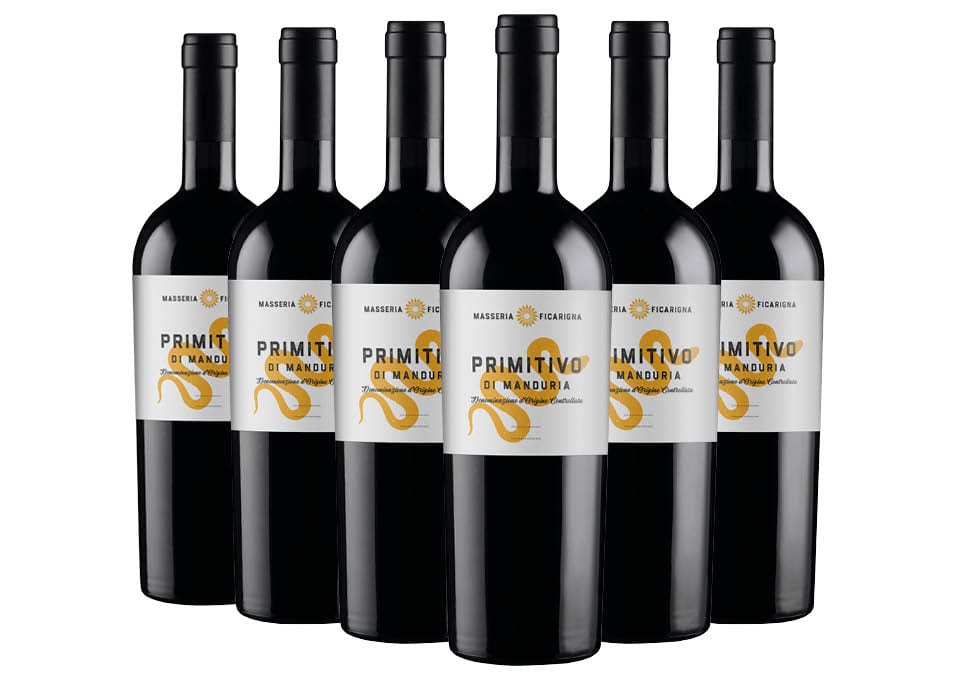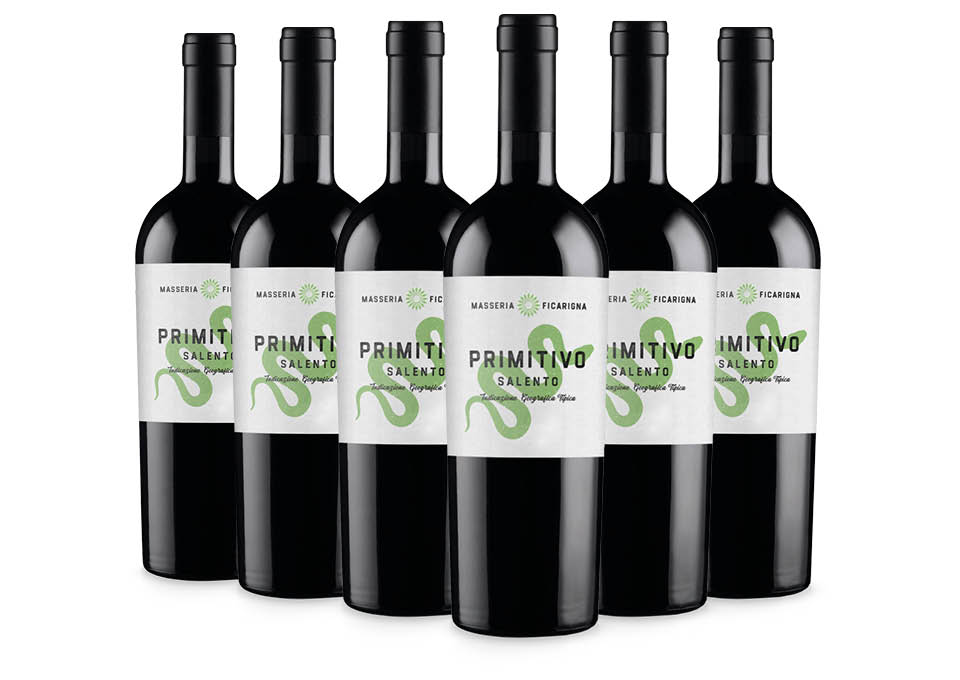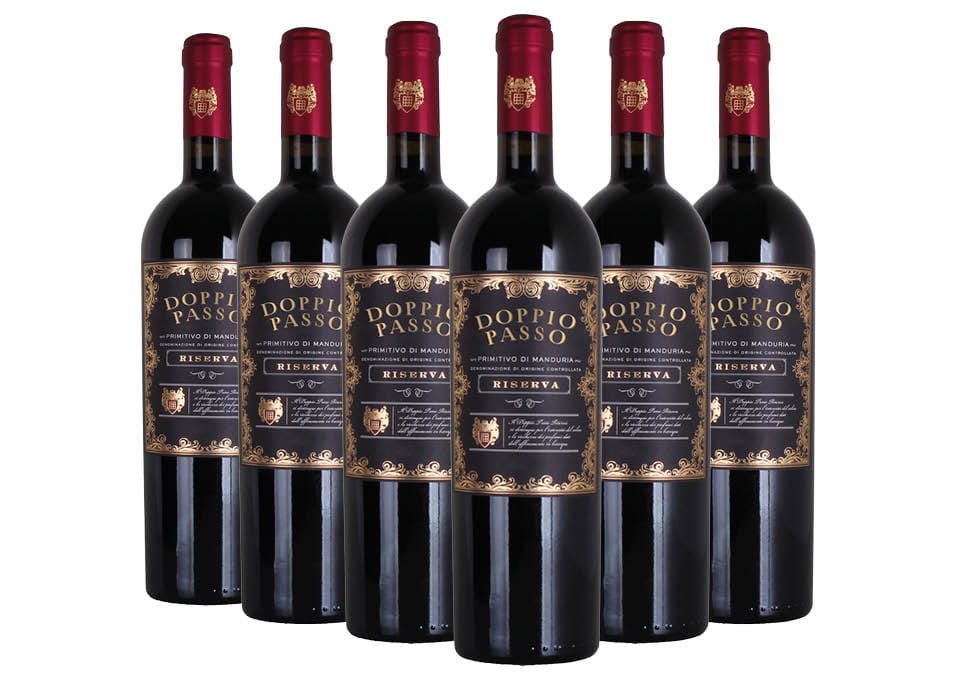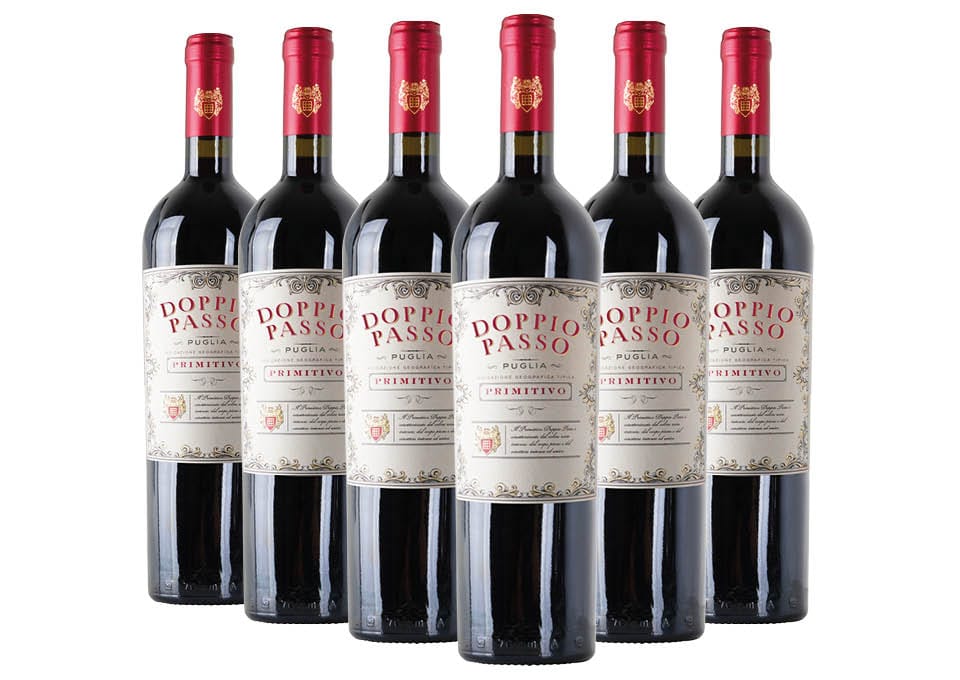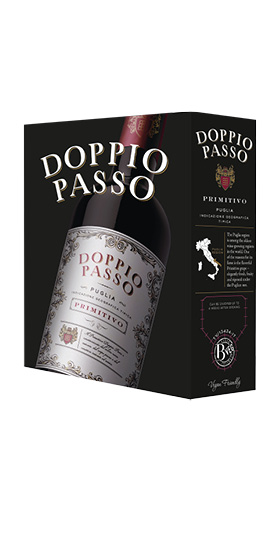Primitivo, Apulia
Primitivo is a black grape variety widespread above all in southern Italy, where it finds the ideal conditions to thrive. It seems that the name of Primitivo derives from the term Primativus used in ancient times to indicate the premature ripening of grapes certified in the Apulian area. The probable arrival in Apulia thanks to the Illyrian people makes it a historically very dated vine. Showing a compact cluster, Primitivo shows great sensitivity to humidity and that is why its diffusion in ventilated areas can help its correct growth without the risk of mould. Highly productive, Primitivo is widespread in the Salento areas, in the provinces of Lecce and Taranto. Also interesting is the genetic similarity of Primitivo with the Zinfandel widespread in California which gives particularly soft and enveloping wines. Only for a few decades, given the great ability to develop a recognizable aromatic complexity, Primitivo is not only used as a blending grape but vinified in purity and in compliance with the best cellar practices. Widespread with more than 12,000 ht between the regions of Apulia, Abruzzo, Campania and Basilicata, Primitivo appears as a grape of some important appellations such as: Primitivo di Manduria, Salento, Apulia, Salento del Massico, Gioia del Colle, Gravina. Intense ruby red colour, tends to garnet with aging. The nose is dominated by red and black fruit, such as blueberries, black cherry, plum, while the ability to age in wood leads the wine to develop spicy aromas of pepper and licorice, complementing it with aromas of cocoa and tobacco dust. Soft in the tannic contribution, it is a full and enveloping wine, capable of guaranteeing great persistence. Some refined versions can also be considered meditation.
Primitivo di Manduria
The spread of Primitivo in the area of Manduria is already attested by Pliny the Elder, despite the entry of this vine into the Italian peninsula can be traced back to the Illyrians who decided to spread it before the Roman era. The discreet trade towards the East of the area's wines was so intense in the Middle Ages that the name 'Brindisi', a city famous for its port, could soon represent, as it will be in modern usage, a wish anticipated by the drinking of good wine. From the Murge area, Primitivo begins to spread in Salento, finding ideal conditions for early ripening: a substantial difference compared to the wines produced in the Gioia del Colle area and consisting of greater body and alcohol content, probably developed for higher temperatures and better conditions for the maturation of the sugars, it was not enough to save Primitivo from its use as a blending wine intended mainly for the French market. Primitivo prefers clayey-calcareous soils and is particularly affected by drought conditions. With a harvest usually carried out at the end of August, the bunches are harvested by hand and the vinification takes place immediately to preserve the integrity of the fruit. Of the 900 ht included in the Primitivo di Manduria appellation, about half are dedicated to the cultivation of the Primitivo grape, while the remainder is dedicated to Negroamaro and Malvasia. The production disciplinary of Primitivo di Manduria DOC provides for a maximum yield of 9 tons per hectare with a yield of grapes not exceeding 70%, the origin of the grapes from company vineyards, the presence of Primitivo for at least 85%. Primitivo di Manduria has an intense ruby red colour and releases aromas of plum and red fruits on the nose that evolve into cocoa, tobacco and oriental spices for a strong body, soft and pleasant tannins, great persistence and roundness.
What are the characteristics of Primitivo?
Primitivo is a grape capable of guaranteeing representative and territorial wines. It lends itself well to the creation of blends, but best expresses its characteristics even when vinified alone. Among the characteristics of Primitivo it is possible to identify a great richness of fruit which is expressed in terms of aromatic fragrance and extract. It is able to guarantee full-bodied and full-bodied wines, with very evident hints of plum, blackberry, strawberry, cocoa, licorice, tobacco. Long sip and great compactness on the palate.
Which food does Primitivo go best with?
Served at a temperature of 18-20°, Primitivo lends itself to many combinations of regional and national cuisine. In the less refined versions, it can accompany meat sauces, legumes and medium-aged cheeses. The best combination for a Primitivo with body and structure can consist of grilled meats, sheep, lamb or boar stewed or baked. The younger versions are also suitable for first courses with meat sauces or legume soups. A very convincing combination leads it to accompany cold cuts and grilled vegetables.
What is the alcohol content of Primitivo?
Primitivo is rich in sugars and therefore able to develop a high alcohol content. The production disciplinary sets the minimum alcohol content at 13.5% for the Primitivo di Manduria, while it is 14% for the Primitivo di Manduria Riserva version.
 Apulia is a land of sea and sun and the Apulian wine contains all its warmth. The vine has been cultivated in Apulia since ancient times, so much so that Pliny the Elder defined Manduria as viticulosa, that is, "full of vines". If in the past the wine was used as a "blending" wine to reinforce other wines, today Apulian wines are widespread and appreciated all over the world. Production is abundant and is close to 5000000 hectoliters. The native grapes are the protagonists, both in the whites with Fiano and Bombino Bianco, and in the reds with Primitivo, Negroamaro and Nero di Troia, which are sometimes part of the more famous and larger appellations, other times smaller and unknown.
Apulia is a land of sea and sun and the Apulian wine contains all its warmth. The vine has been cultivated in Apulia since ancient times, so much so that Pliny the Elder defined Manduria as viticulosa, that is, "full of vines". If in the past the wine was used as a "blending" wine to reinforce other wines, today Apulian wines are widespread and appreciated all over the world. Production is abundant and is close to 5000000 hectoliters. The native grapes are the protagonists, both in the whites with Fiano and Bombino Bianco, and in the reds with Primitivo, Negroamaro and Nero di Troia, which are sometimes part of the more famous and larger appellations, other times smaller and unknown.
Apulian red wine: fruit in its pure state
Apulian red wines are usually structured and juicy, with a strong fruity character. The most famous grapes are undoubtedly the Negroamaro (which gives soft and velvety reds, with a slightly bitter background) and the Primitivo, famous above all for the Primitivo di Manduria, which instead gives structured wines with a good alcoholic content and which seems a relative of Californian Zinfandel. Not to forget the Uva di Troia and the black Malvasia, also protagonist of the famous rosé wines of Salento and of a small and unknown appellation: the Cacc'e Mitte di Lucera. Also noteworthy are the sweet wines from red berried grapes, such as Primitivo liqueur and Salice Salentino Aleatico Passito, which manage to highlight the full potential of Apulian wines.
Apulian white wine: all the goodness of the earth
Apulia is known for its red wines, but there are also fine Apulian white wines, from the Locorotondo to the white Gravina passing through the Castel del Monte appellation. In this region there are both native grapes, such as Bombino Bianco, Malvasia Bianca and Verdeca, and international grapes, such as Chardonnay, which has found a happy island in Salento and is today one of the most widespread in the region. Apulian white wines are fresh and drinkable and for this reason they are easy to pair. From the white berried grapes are also born fabulous dessert wines, such as Moscato di Trani, which is present both as a sweet wine and as a straw wine.
What are the finest Apulian wines?
The most prestigious and famous Apulian wines are known all over the world and usually have large companies behind them: among the many, we cannot fail to mention the historic Five Roses by Leone De Castris (progenitor of the Salento rosé wines), the wines of the Tormaresca estate and above all the Primitivo di Gianfranco Fino, one of the most awarded and famous Apulian wines among wine lovers.
When were Apulian rosé wines born?
Apulian rosé wines are born with Leone De Castris' Five Roses: at the end of the last world war, the American general Charles Poletti, commissioner for supplies of the allied forces, asked for a large supply of rosé wine from the Leone De Castris winery. Thus was born a 100% Italian wine, but with a strictly American name: Five Roses (from the Cinque Vie district, not far from the Negroamaro vineyards that give life to this wine). A story full of successes, which today sees in this kind of rosé wines a must of the summer, in Italy and beyond.
What are the Apulian DOCG wines?
Apulian DOCG wines include three red wines, Castel Del Monte Bombino Nero DOCG, Castel del Monte Nero di Troia DOCG and Castel del Monte Rosso Riserva DOCG, as well as of course a sweet wine, the sweet natural Primitivo di Manduria DOCG. However, there are numerous DOC and IGT wines, scattered throughout the region from the Gargano to the extreme tip of Salento.



